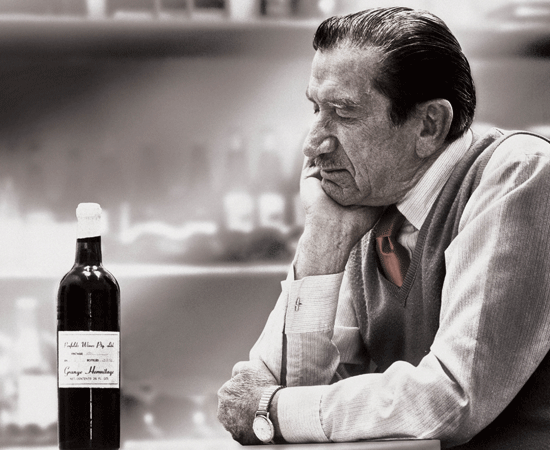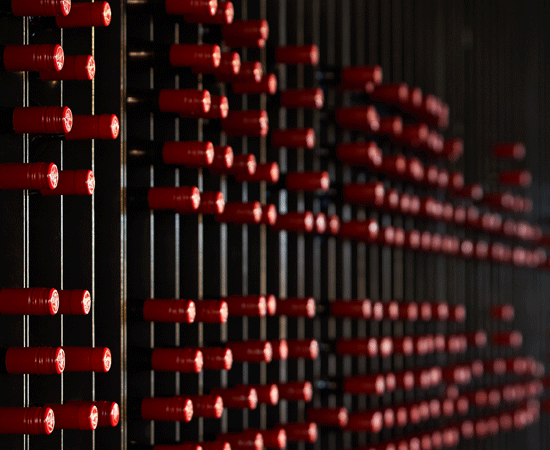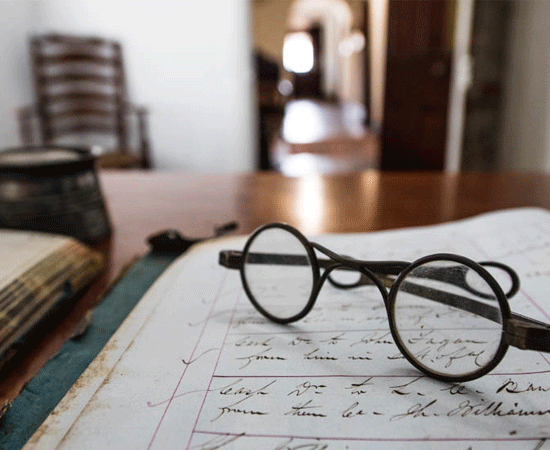年月がキャラクターを創る

A Rich Fortified Tradition
1844 to evermore. How Penfolds has led the way in Australian fortified winemaking excellence.
Penfolds has a long tradition of fortified wine production, dating back to 1844. It began with Dr Christopher and Mary Penfold, pioneers who dreamt big, inventing tonics, brandies, and fortified wines made from grapes and Australian sunshine. It continued with Alf Vesey, a stalwart of 69 vintages, who worked directly for Mary Penfold and trained Max Schubert as his understudy during the 1930s. Generations of Penfolds winemakers have been custodians of our rich fortified winemaking tradition and continue to push the development to new heights.
Many of our beautifully concentrated and complex wines are now living history, with some components in barrel dating as far back as 1915.
What is fortified wine?
Fortified wine is created by the addition of grape spirit to fermenting grape juice, thus fortifying it and increasing the alcohol by volume (ABV) - most fortified wines sit at between 17.5% to 20.0% ABV. The history of fortified wine production is believed to date as far back as the 16th century when winemakers added spirits like brandy to wine to mitigate spoilage during long voyages.
What are the types of fortified wine?
Fortified wine can be very sweet, completely dry or somewhere in between. Typically, sweet styles undergo partial fermentation, resulting in residual sugar after fortification. While dry styles are fortified after fermentation.
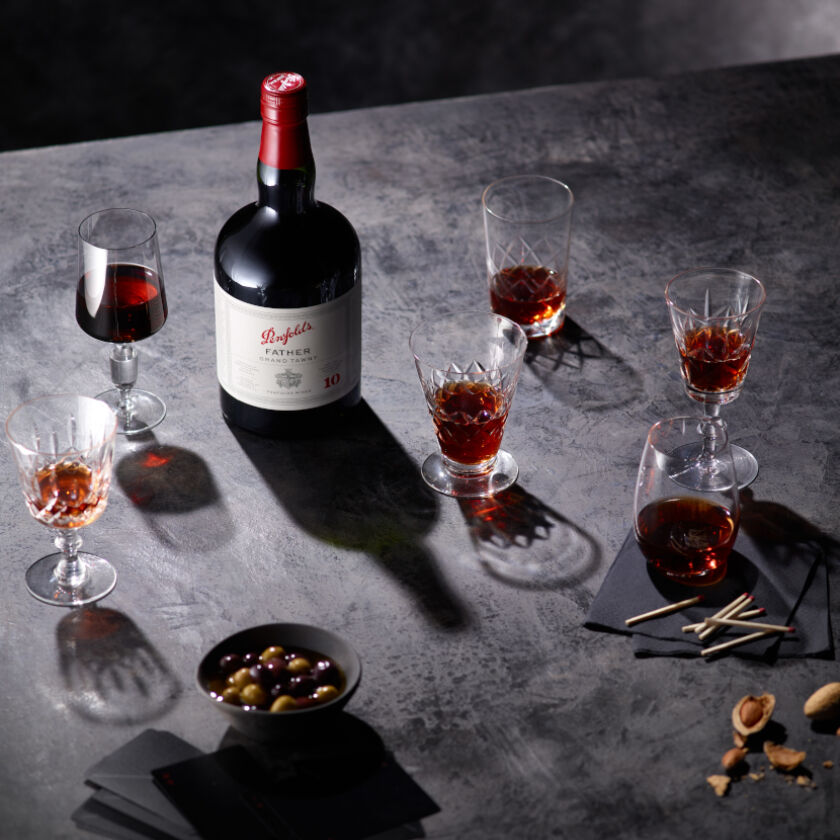
The term ‘fortified wine’ encompasses various styles; in some cases, a particular variety can be produced in either a sweet or dry style. Sherry or apera (as it’s known in Australia), muscat, port (ruby, vintage and tawny), madeira and marsala are among well-known styles.
Today, Penfolds continues to focus on tawny styles, using the term “tawny” rather than “tawny port”, keeping with international trade agreements. Each of our tawnies is described by its “minimum average blended age”, with our 50 Year Old Rare Tawny having more richness, weight, and complexity than our Father Grand Tawny 10 Year Old . Penfolds Club and Club Reserves are much finer and fruit rich than our solera-aged Grandfathers. These differences are categorised by an Australian Wine Industry Classification, which outlines four step levels of quality (Australian, Classic, Grand and Rare) based on the minimum average age and character of the wine. Nonetheless, Penfolds Tawnies share the theme of freshness, authenticity, and full-bodied flavours.
How is Penfolds fortified wine made?
Penfolds distinctive Tawny House Style is connected to long-held relationships and time-honoured production methods. Many grape-growing families have collaborated and supplied fruit to Penfolds over generations, and during this time, our vinification methods have been refined and improved. The addition of low-strength, full-flavoured fortifying grape spirit is an essential element because it integrates and remains in balance with the wine throughout its life.
Many of our tawnies are matured in solera systems – stacks of oak barrels that are filled and racked over the seasons. A maturation method that ensures concentration and fruit complexity, bringing an underlying and consistent maturation character across our fortified range.
Following vinification and fortification, our tawnies are aged primarily in 300-litre seasoned oak hogsheads with enough headspace for the wine to expand in the summer months. The cyclic temperature swings are vital to the maturation process, incorporating evaporation, concentration, and controlled oxidation. Some tawny components are barrel-aged for three years, and others for 50 years (or more) as reserve blending stock. The density and weight of each barrel-aged tawny are proportionate to the evaporation effect, also known as the “Angel’s Share”.
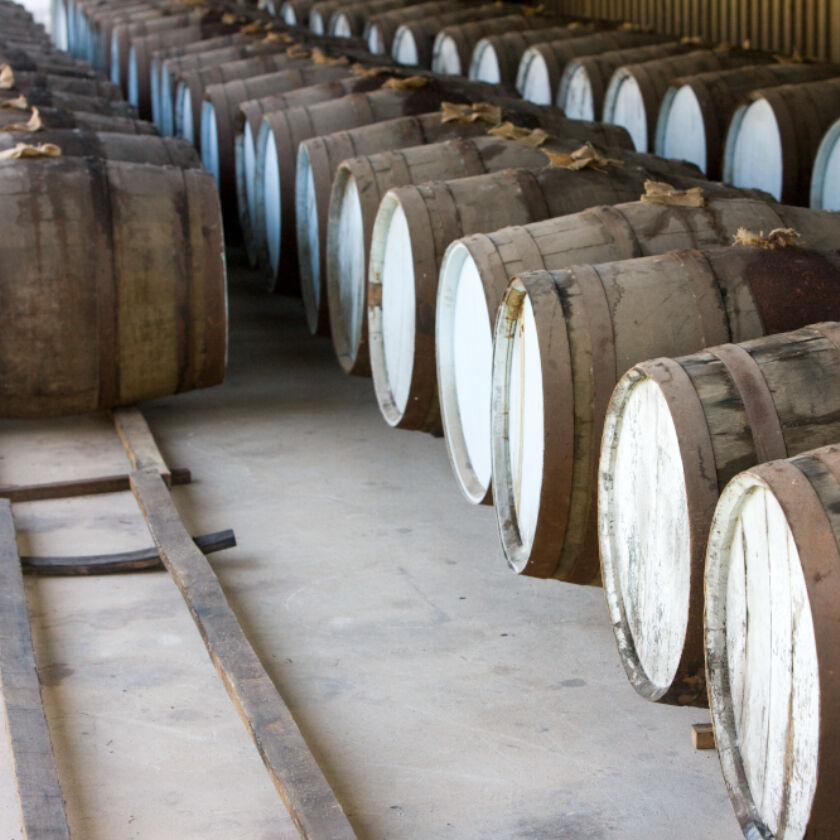
Penfolds fortified wines retain the distinctive DNA of the original style, though we are continually and sympathetically evolving.
James Godfrey, Global Fortified and Spirit Winemaker
What makes Penfolds fortified wine different?
Fruit classification, batch vinification and barrel maturation are crucial considerations in our production process. Fruit intensity and richness, the ‘maturation effect’ derived from ageing in old oak hogshead casks, and the selection of grape spirit are essential to House Style.
Our winemakers source fruit from the Barossa and Riverland region of South Australia, seeking bright fruit with a softer tannin structure. Shiraz and mataro form the backbone of our fortifieds, complemented by varieties such as cabernet sauvignon, grenache, and select Portuguese varieties.
Mataro ages much more rapidly compared to the other varietals, while shiraz contributes richness. Grenache adds spice and lifts the wine with confectionary notes. Cabernet sauvignon, sourced from warmer climates, provides a riper spectrum of the variety with more blackcurrant flavours. Portuguese varieties lend savoury characters, lifted florals and aromatic character, and elegant tannin structures.
The custodians of our craft
A dedicated team supports the production of our fortified wines, led by James Godfrey, who initially joined the winemaking team to oversee the style, integrity, and quality of our fortifieds. As James’s passion grew, he explored the realms of grape distillation, spearheading projects in brandy and fortified spirit, which are intricately woven into our origin story.
Working alongside James is Matt Woo, ensuring our fortified collection's daily craftsmanship and timeless legacy. Together, they created Penfolds 50 Year Old Rare Tawny. A wine comprising special individual vintage parcels (including 1915, 1940, 1945, 1965, 1971) blended in a solera system, so they live forever in a blend rather than bottled individually.
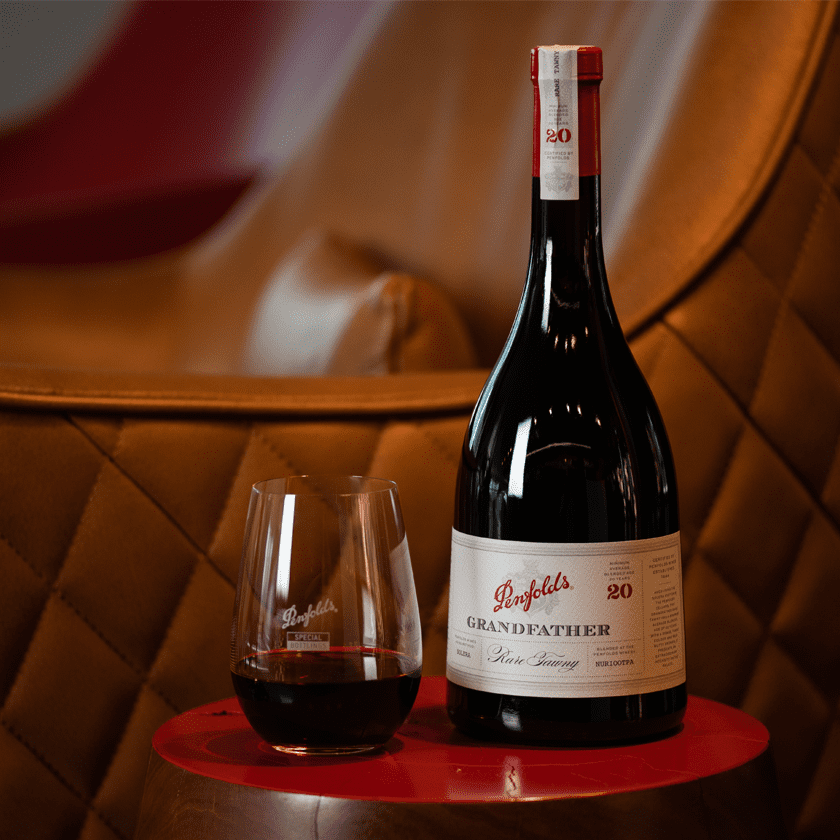
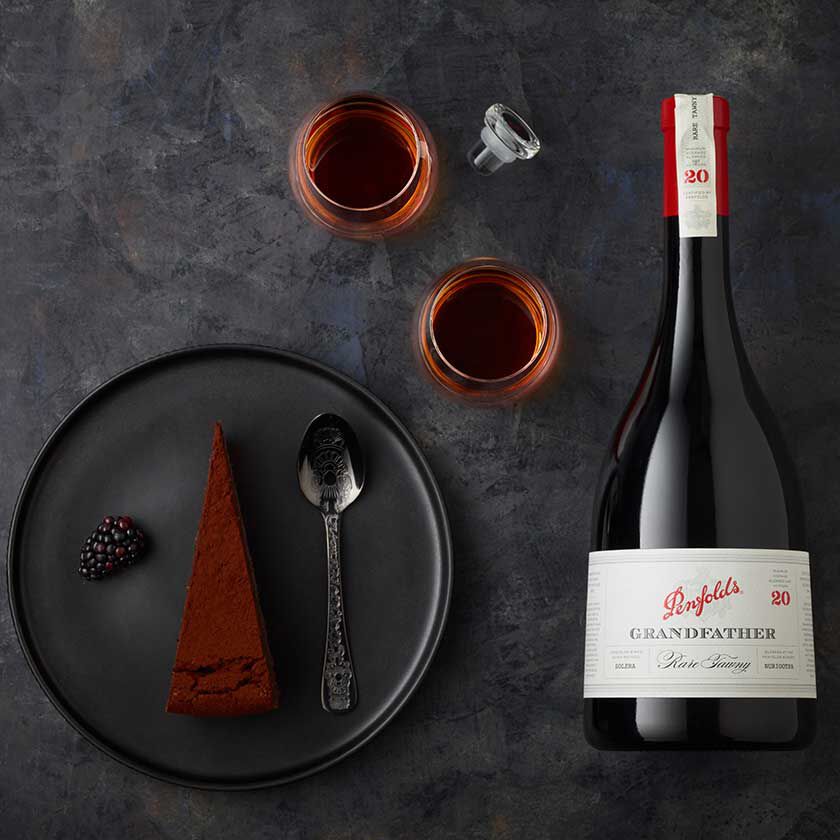
What food should I pair fortified wine with?
Experience the intricate complexity of our fortified wines on their own, as aperitif, a digestif, or celebrate their diversity by incorporating them into cocktails. They pair exquisitely with cheese and desserts – savour our vintage fortifieds alongside stilton blue, roquefort, or gorgonzola. Indulge in our tawnies with desserts like crème brûlée and apple pie, or enjoy them with aged cheeses such as manchego or pecorino. Be adventurous and embrace the possibility of pairing them with savoury dishes to balance rich foods - you may be pleasantly surprised.
Fortified winemaking imparts invaluable lessons in blending to achieve house style, understanding the influence of different barrels on maturation, and navigating the harmonious interplay between acidity, tannins and alcohol to achieve impeccable balance.
Matt Woo, Fortified Winemaker
